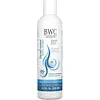What's inside
What's inside
 Key Ingredients
Key Ingredients

 Benefits
Benefits

 Concerns
Concerns

 Ingredients Side-by-side
Ingredients Side-by-side

Water
Skin ConditioningGlycerin
HumectantPolysorbate 20
EmulsifyingAloe Barbadensis Leaf Juice
Skin ConditioningCitric Acid
BufferingSodium Citrate
BufferingPanthenol
Skin ConditioningSodium PCA
HumectantAllantoin
Skin ConditioningCucumis Sativus Extract
Skin ConditioningTocopherol
AntioxidantMagnesium Ascorbyl Phosphate
AntioxidantRetinyl Palmitate
Skin ConditioningCamellia Sinensis Extract
AntioxidantSorbitol
HumectantHydrogenated Castor Oil
EmollientPhenoxyethanol
PreservativeEthylhexylglycerin
Skin ConditioningViola Odorata Oil
MaskingPelargonium Graveolens Oil
MaskingLavandula Hybrida Oil
EmollientCymbopogon Martini Oil
MaskingWater, Glycerin, Polysorbate 20, Aloe Barbadensis Leaf Juice, Citric Acid, Sodium Citrate, Panthenol, Sodium PCA, Allantoin, Cucumis Sativus Extract, Tocopherol, Magnesium Ascorbyl Phosphate, Retinyl Palmitate, Camellia Sinensis Extract, Sorbitol, Hydrogenated Castor Oil, Phenoxyethanol, Ethylhexylglycerin, Viola Odorata Oil, Pelargonium Graveolens Oil, Lavandula Hybrida Oil, Cymbopogon Martini Oil
Water
Skin ConditioningLauryl Glucoside
CleansingDecyl Glucoside
CleansingCocamidopropyl Hydroxysultaine
CleansingSodium Lauroyl Methyl Isethionate
CleansingGlycerin
HumectantSodium Methyl Cocoyl Taurate
CleansingDisodium Cocoamphodiacetate
CleansingCocamidopropyl Betaine
CleansingGluconolactone
Skin ConditioningParfum
MaskingPotassium Olivoyl PCA
CleansingPotassium Sorbate
PreservativeCitric Acid
BufferingAlcohol
AntimicrobialRubus Fruticosus Fruit Extract
AstringentRosa Canina Fruit Extract
AstringentPunica Granatum Extract
AstringentEuterpe Oleracea Fruit Extract
Chamomilla Recutita Flower Extract
MaskingCalendula Officinalis Flower Extract
MaskingAspalathus Linearis Leaf Extract
Skin ConditioningWater, Lauryl Glucoside, Decyl Glucoside, Cocamidopropyl Hydroxysultaine, Sodium Lauroyl Methyl Isethionate, Glycerin, Sodium Methyl Cocoyl Taurate, Disodium Cocoamphodiacetate, Cocamidopropyl Betaine, Gluconolactone, Parfum, Potassium Olivoyl PCA, Potassium Sorbate, Citric Acid, Alcohol, Rubus Fruticosus Fruit Extract, Rosa Canina Fruit Extract, Punica Granatum Extract, Euterpe Oleracea Fruit Extract, Chamomilla Recutita Flower Extract, Calendula Officinalis Flower Extract, Aspalathus Linearis Leaf Extract
 Reviews
Reviews

Ingredients Explained
These ingredients are found in both products.
Ingredients higher up in an ingredient list are typically present in a larger amount.
Citric Acid is an alpha hydroxy acid (AHA) naturally found in citrus fruits like oranges, lemons, and limes.
Like other AHAs, citric acid can exfoliate skin by breaking down the bonds that hold dead skin cells together. This helps reveal smoother and brighter skin underneath.
However, this exfoliating effect only happens at high concentrations (20%) which can be hard to find in cosmetic products.
Due to this, citric acid is usually included in small amounts as a pH adjuster. This helps keep products slightly more acidic and compatible with skin's natural pH.
In skincare formulas, citric acid can:
While it can provide some skin benefits, research shows lactic acid and glycolic acid are generally more effective and less irritating exfoliants.
Most citric acid used in skincare today is made by fermenting sugars (usually from molasses). This synthetic version is identical to the natural citrus form but easier to stabilize and use in formulations.
Read more about some other popular AHA's here:
Learn more about Citric AcidGlycerin is already naturally found in your skin. It helps moisturize and protect your skin.
A study from 2016 found glycerin to be more effective as a humectant than AHAs and hyaluronic acid.
As a humectant, it helps the skin stay hydrated by pulling moisture to your skin. The low molecular weight of glycerin allows it to pull moisture into the deeper layers of your skin.
Hydrated skin improves your skin barrier; Your skin barrier helps protect against irritants and bacteria.
Glycerin has also been found to have antimicrobial and antiviral properties. Due to these properties, glycerin is often used in wound and burn treatments.
In cosmetics, glycerin is usually derived from plants such as soybean or palm. However, it can also be sourced from animals, such as tallow or animal fat.
This ingredient is organic, colorless, odorless, and non-toxic.
Glycerin is the name for this ingredient in American English. British English uses Glycerol/Glycerine.
Learn more about GlycerinWater. It's the most common cosmetic ingredient of all. You'll usually see it at the top of ingredient lists, meaning that it makes up the largest part of the product.
So why is it so popular? Water most often acts as a solvent - this means that it helps dissolve other ingredients into the formulation.
You'll also recognize water as that liquid we all need to stay alive. If you see this, drink a glass of water. Stay hydrated!
Learn more about Water